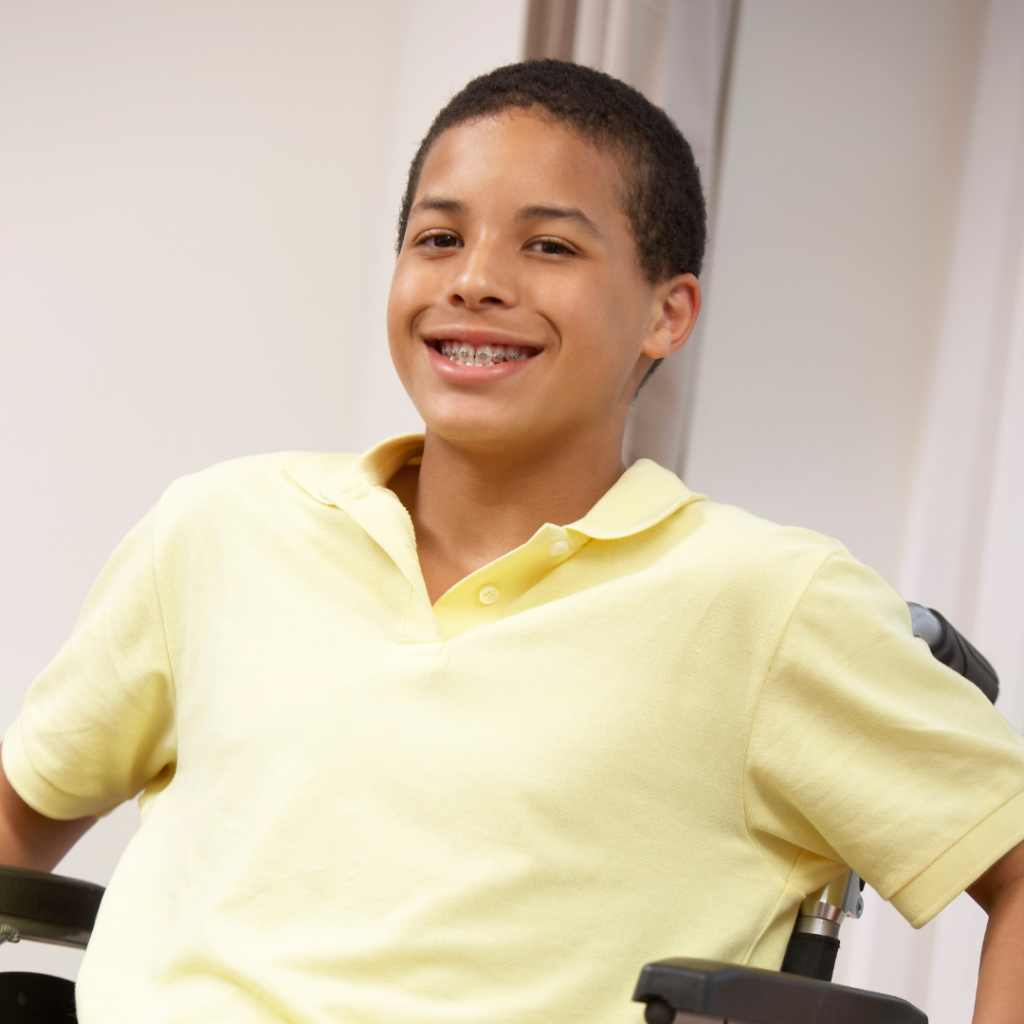Speech and Language Therapy Process
Complimentary Initial Consultation
Empowered by Speech LLC offers a complimentary 15 minute phone call consultation for potential clients. The consultation along with a short questionnaire will aid in determining whether your child would benefit from a comprehensive evaluation in one or more of the following areas: speech sound production, language, and/or social communication.
Evaluation
A current assessment of your child’s skills is necessary to determine treatment goals. If your child has been evaluated by a Speech Language Pathologist in the last 6 months in the areas considered for treatment, you may provide the report and we can determine whether there is sufficient information to proceed. We do offer comprehensive evaluations in the areas of language, articulation, social communication and Augmentative and Alternative Communication (AAC). A written evaluation report will be given to you along with recommendations for treatment.
Treatment
If treatment is recommended, we will go over a proposed treatment plan with you including goals, frequency and duration of sessions. We offer in-office and teletherapy options.
Payment Methods
Empowered by Speech LLC accepts payment through:
Private-pay: We accept credit card payment including HSA/FSA cards, personal checks and cash. Payment can be made in person or online through Stripe. A discount is given for private-pay payments (please see rates and services). Social skills groups are private-pay only.
In-network Insurance: We are an in-network provider for Medicaid, Healthpartners, Cigna and United Healthcare insurance.
Out-of-network Insurance: A Superbill receipt will be given to you to use for reimbursement from insurance companies out-of network at your own convenience.



Speech Sound Intervention
What is a speech sound or articulation disorder?
According to the DSM-5, there are four criterion for Speech Sound Disorder:
- Persistent unintelligible speech consisting of phoneme addition, omission, distortion, or substitution, which interferes with verbal communication.
- There is interference with either social participation, academic performance, or occupational performance (or any combination thereof).
- The onset of symptoms is during childhood.
- The symptoms cannot be accounted for by another medical or neurological condition, including TBI (Traumatic Brain Injury) (American Psychiatric Association, 2013).
what is a pHONOLOGICAL DISORDER?
A phonological disorder is a speech sound disorder consisting of errors in patterns of speech sounds (i.e. fronting, stopping, final consonant deletion).
what is CHILDHOOD APRAXIA OF SPEECH (CAS)?
CAS is a neurological childhood speech sound disorder in which errors in speech sound production are due to impairment in planning and sequencing movements necessary for speech in the absence of neuromuscular deficits (i.e. abnormal reflexes, abnormal tone).
what do you work on in speech therapy?
Intervention will depend on your child’s needs but often with this age group (9-18) the emphasis includes:
- Teaching phonetic placement (where your articulators need to be for correct speech sound production)
- Auditory discrimination training (being able to discriminate between correct and incorrect productions)
- Phonological awareness (knowing which words have target sounds)
- Intelligibility (how well others understand your speech)
- Carryover and generalization of skills to more demanding tasks, unstructured tasks, a variety of environments and communication partners
- Self-monitoring and self-correction
- Individual ownership of goals and progress
Language Intervention
what is a language Disorder?
A language disorder is a significant impairment in the acquisition and use of language due to deficits in comprehension and/or production across any of the five language domains (i.e., phonology, morphology, syntax, semantics, pragmatics).
what is the difference between a Language Delay, Specific language impairment (SLI) and developmental language disorder (DLD)?
- Developmental language disorder (DLD) is used when the language disorder is a primary disability without a known medical cause and persisting at school
- (Bishop et al., 2017).
- Specific language impairment (SLI) may still be used with distinctions from DLD (McGregor et al., 2020; Rice, 2020). These distinctions have typically included criteria of an IQ of 85 or above.
- Language disorder associated with [condition] is used to describe a language disorder that is secondary to another condition or diagnosis, such autism, Down syndrome, intellectual disability, traumatic brain injury, or sensory impairment. For example, “a language disorder associated with autism.
- Language Delay vs. Language Disorder A language delay is a delay in acquisition of language skills compared to one’s peers. A young child with a language delay may exhibit a slower onset of a language skill, rate of progression through the acquisition process, sequence in which the language skills are learned, or all of the above. There is a subset of children who continue to demonstrate persistent difficulties acquiring and using language skills below chronological age expectations (by preschool or school age) that cannot be explained by other factors and may be identified as having a language disorder.
What does that all mean?
These terms are somewhat confusing even for SLP’s! They are often used specifically for research purposes or qualifying criteria but many SLP’s will use a variety of these terms to mean similar things. To simplify it, I will use Language Disorder to describe impairments in receptive (understanding) or expressive (using) language.
how can you support my child?
Intervention will depend on your child’s needs but often with this age group (9-18) the emphasis includes:
- Reading comprehension
- Vocabulary knowledge and strategies
- Inferences
- Sentence Structure and grammar
- Comprehension of written and verbal instructions
- Using visual graphic organizers
- Written language
Social Communication Intervention
what is a social communication disorder?
Social communication disorder (SCD) is characterized by persistent difficulties with the use of verbal and nonverbal language for social purposes. Primary difficulties may be in social interaction, social understanding, pragmatics, language processing, or any combination of the above (Adams, 2005). Specific communication challenges may become apparent when difficulties arise in the following:
- communicating for social purposes in ways that are appropriate for the particular social context
- changing communication to match the context or needs of the listener
- following rules for conversation and storytelling
- understanding nonliteral or ambiguous language
- understanding that which is not explicitly stated
- sentence grammar and lexical semantics
- inferential language
- discourse comprehension
- misinterpretation of contextual meaning
This definition is consistent with the diagnostic criteria for social (pragmatic) communication disorder detailed in the Diagnostic and Statistical Manual of Mental Disorders (5th ed.; American Psychiatric Association, 2013).
Augmentative and Alternative Communication (AAC)
what is aAC?
AAC is augmentative when used to supplement existing speech and alternative when used in place of speech that is absent or not functional.
AAC uses a variety of techniques and tools to help the individual express thoughts, wants and needs, feelings, and ideas, including the following:
- manual signs
- gestures
- tangible objects
- line drawings
- picture communication boards and letter boards
- speech-generating devices
Autism Spectrum Disorder (ASD) Support
what is autism Spectrum disorder(ASD)?
Autism Spectrum Disorder is a neurodevelopmental disorder characterized by deficits in social communication and social interaction and the presence of restricted, repetitive behaviors.
According to the Diagnostic and Statistical Manual of Mental Disorders (DSM-5), a guide created by the American Psychiatric Association that health care providers use to diagnose mental disorders, people with ASD often have:
- Difficulty with communication and interaction with other people
- Restricted interests and repetitive behaviors
- Symptoms that affect their ability to function in school, work, and other areas of life
What we look for:
The list below gives some examples of common types of behaviors in people diagnosed with ASD. Not all people with ASD will have all behaviors, but most will have several of the behaviors listed below.
Social communication / interaction behaviors may include:
- Making little or inconsistent eye contact
- Appearing not to look at or listen to people who are talking
- Infrequently sharing interest, emotion, or enjoyment of objects or activities (including infrequent pointing at or showing things to others)
- Not responding or being slow to respond to one’s name or to other verbal bids for attention
- Having difficulties with the back and forth of conversation
- Often talking at length about a favorite subject without noticing that others are not interested or without giving others a chance to respond
- Displaying facial expressions, movements, and gestures that do not match what is being said
- Having an unusual tone of voice that may sound sing-song or flat and robot-like
- Having trouble understanding another person’s point of view or being unable to predict or understand other people’s actions
- Difficulties adjusting behaviors to social situations
- Difficulties sharing in imaginative play or in making friends
Restrictive / repetitive behaviors may include:
- Repeating certain behaviors or having unusual behaviors, such as repeating words or phrases (a behavior called echolalia)
- Having a lasting intense interest in specific topics, such as numbers, details, or facts
- Showing overly focused interests, such as with moving objects or parts of objects
- Becoming upset by slight changes in a routine and having difficulty with transitions
- Being more sensitive or less sensitive than other people to sensory input, such as light, sound, clothing, or temperature
Caregivers and teachers are often the first to recognize ASD symptoms in older children and adolescents who attend school. The school’s special education team may perform an initial evaluation and then recommend that a child undergo additional evaluation with their primary health care provider or a health care provider who specialize in ASD.
A child’s caregivers may talk with these health care providers about their child’s social difficulties, including problems with subtle communication. For example, some children may have problems understanding tone of voice, facial expressions, or body language. Older children and adolescents may have trouble understanding figures of speech, humor, or sarcasm. They also may have trouble forming friendships with peers. (information taken from National Institute of Mental Health)





